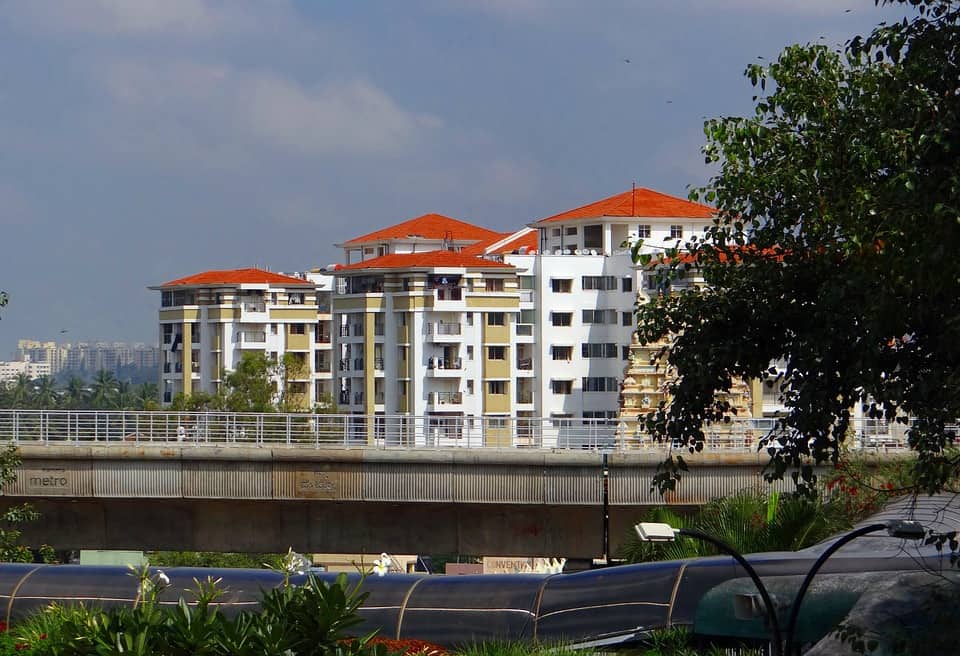The hybrid work model, a combination of work from home and from office, has had a major impact on house rents in Bengaluru. Lakhs of IT professionals and their families, who had shifted out of the city during the pandemic and were working remotely from their respective hometowns, are now back and looking for affordable homes on rent.
High demand for rented accommodation
Homeowners, sensing an opportunity to recoup what they had lost during the pandemic, have jacked up their rents to unprecedented levels. Gated communities and standalone buildings across Bengaluru are seeing overwhelming demand for rented accommodation, especially home complexes within a 3-5 kilometre radius from IT hubs and tech parks. Rents in such areas have risen by as much as 40% in the past quarter.
The average time for such apartments to be rented out on popular portals like nobroker.com and 99acres.com is 5-6 hours.
Shayam Iyer, who owns an apartment in a gated society on Sarjapur Road, was swamped with tenant inquiries within a few minutes of listing his house on a property rental website. He eventually rented it out to an IT professional, working in a nearby tech park, at Rs 45,000 a month; an increase of 30% as compared to what he was getting from his previous tenant.
Shayam didn’t even have to negotiate with his new tenant, a common phenomenon now in areas with high rental demand.
It is not just the numbers in families who have returned to Bengaluru that are driving up returns. It is also the influx of students, who had graduated and joined the workforce, especially those working in IT companies, which had increased headcount during the pandemic years, who now have to adjust to the hybrid work system and hence prefer to live in the city.
However, housing supply has not kept pace as construction activity was halted for almost two years.
Two to three lakh vacant flats in Bengaluru
Shruti Rajagopalan, who hails from Thrissur and works as a physiotherapist, was staying on rent in a 2BHK in Marathahalli with her husband and 4-year-old son. They were forced to move to a smaller house as the house owner suddenly increased the monthly rent from Rs 15,000 to Rs 22,000.
As per a report by REA, a leading real estate research and advisory company in the country, the unsold housing stock in Bengaluru is 77,260. As per the state government implementing the model tenancy act, there are two to three lakh vacant houses in Bengaluru which are not rented out due to litigation concerns. This significantly reduces the supply of housing within the city limits.

However, housing demands are also largely affected by proximity to workplace, commute time, accessibility to amenities. Thus, gated societies have always been in high demand for most tenants due to the conveniences they provide. Especially as an increasing number of urban residents nowadays value their living experiences over considerations such as affordability.
While gated communities with amenities have seen big surges in rent, the case of smaller apartments with accessibility issues is quite different. Alice Koso, a freelance psychologist from Imphal, recently rented a 450 square feet house in Junnasandra in an independent building for Rs 10,000.
“I had to compromise on accessibility in order to ensure affordability,” says Alice. It takes her 20 minutes to reach the nearest bus stop after a change of two share autos. There are several vacant apartments in her building, largely because of the remoteness of the location.
Read more: Prejudice and stereotypes make house-renting a pain for single women in Bengaluru
However, there are a high number of vacant flats in certain areas of Bengaluru, especially in sites and gated communities developed by the BDA. Yeswanth Kumar, resident of BDA’s Arkavathy Layout at Gedalahalli Road, is one the very few residents there, with more than 90% of houses being vacant. Many bought houses as real estate investment, but the area remains largely unoccupied due to poor connectivity and lack of amenities.
Impact on migrant workers
Bengaluru is also home to more than 42 lakh migrant workers, of which nearly 50% work in the non-IT sector, especially in support jobs such as domestic helpers, drivers, security guards, gig economy support workers (carpenters, electricians and beauticians) etc. Their average monthly income is less than Rs 10,000.
Most of them live in shanty housing in close proximity to their workplaces so that they don’t have to spend resources on commuting. But they too have had to face rental increases of 10% to 15% in recent months.
Like Mita from Krishnangar in West Bengal, who has been working as a cook in Tippasandra for the last ten years. ”Earlier I used to pay Rs 5,000 as rent for a one-room kitchen with shared toilet and bath and now I pay about Rs 6,800 for the same,” says Mita. The rent works out to 40% of her monthly income.
Increase in PG rents
The cost of Paying Guest (PG) accommodation, mostly occupied by students, has also seen a significant rise in demand and rents as colleges and training institutes have started functioning in pre-COVID mode. A twin sharing room in a PG for girls with basic amenities now costs about Rs 8,000 (monthly) in Brookfield as compared to Rs 6,000 In 2019.
Other metro areas like Delhi-NCR, Mumbai and Hyderabad too have been experiencing an unprecedented surge in rent. Real estate experts believe that this surge is a market correction as there was stagnation in rents during the two years of the pandemic when housing rentals fell by up to 25%. Houseowners are now trying to make up for the past losses.
Tailpiece: Under India’s commitment of SDG 11, it needs to ensure access to adequate, safe and affordable housing for all by 2023.
Very nicely written…